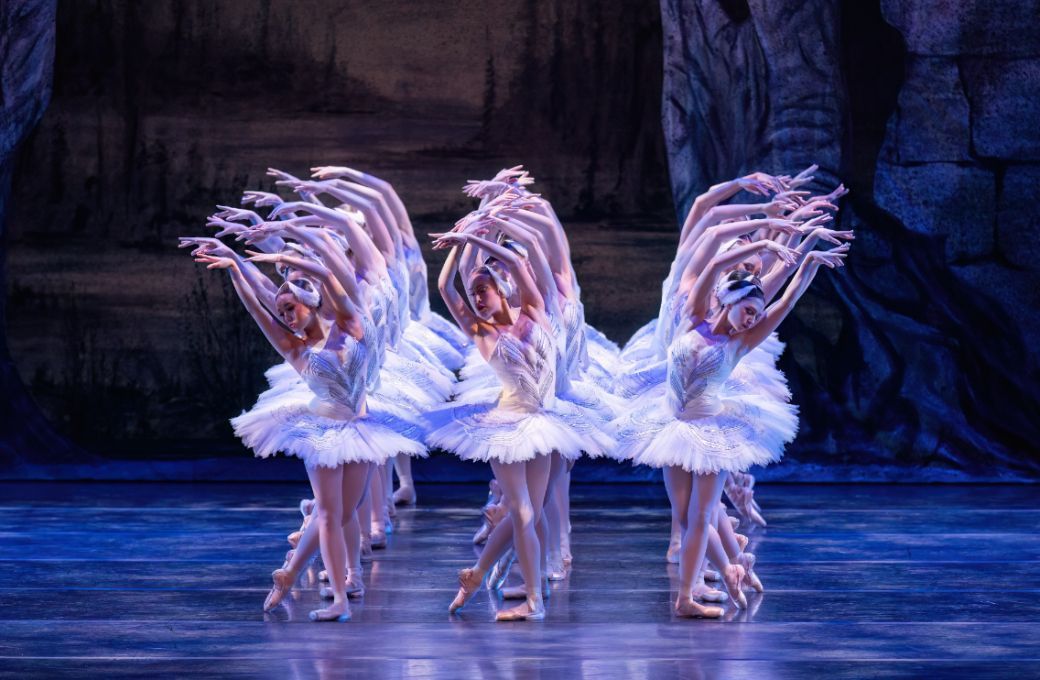Opening the Kansas City Ballet’s 2025-2026 season was a lovely performance of Swan Lake. In such a well-loved ballet, everything is likely to draw the eye and ear, particularly the iconic swans in all their dazzling permutations and Tchaikovksy’s luminous score. But we are all intuitively aware that the production will depend for its core strength on the prima ballerina herself in her dramatic dual role as innocence incarnate and evil personified.

We feel that this is one the all-time pièce de résistance of a dancer’s career, this the ultimate test of maturity. Leads, I find, very often have a ‘sweet spot’ in either the Odette or the Odile role. It’s tough to be equally bad-girl, good-girl and all in the same three hours. For Kaleena Burks tonight, it was definitely Odette. True, her bad-girl Odile was very good indeed, and the infamous fouetté turns performed with virtuosic technique.
But it was her nuanced portrayal of Odette that was most remarkable, and one that deserves a lot of praise. She put so much of herself into it – projecting from her first appearance both reticence and eagerness, fragility and strength, fear and hope. Her timing, I thought, was a thing of grace and beauty, evident in lingering, melting movements and poses. It brings an extra dimension when you can marry your movements with the give-and-take of the music and seemingly expand the available time so that your movements stretch out unto a vanishing point ever beyond our reach. This is, after all, what romanticism means, and Burks showed great artistic sensitivity throughout.
Andrew Vecseri, her princely counterpart, partnered her decorously, while Cameron Thomas, as von Rothbart, was a good baddie, as it were: he brought plenty of dark energy on stage, a true Lord of the Underworld, his daughter very much at his beck and call. And I liked the snippet of Aidan Duffy’s engaging Benno in the first act. There was some nice on-stage balletic energy in evidence in Act 3: Gillian Yoder and Joseph Boswell as the Spanish dancers; Taryn Pachciarz and Joshua Kiesel as the Neopolitans, and Kelsey Ivan Hellebuych and Gavin Abercrombie as the Hungarian Czardas. The corps of swans populated the stage with power and grace, and the quartet of cygnets, Amelia Meissner, Taryn Pachciarz, Marisa DeEtte Whiteman, and Yoder again, presented a well-rehearsed synchronicity.
Sets were just what one would expect – misty lakes, and chiaroscuro backgrounds, combined with the genteel pomp of great halls. The costumes, like the sets, courtesy of Peter Cazalet, showed off what ballet does best, in providing an easy-on-the-eye interpretation of courtly culture of the ancien régime, with a few village maidens (picturesque simplicity) and a great many swans (exotic grace) thrown in for good measure.
The core of the story is so symbolic and rich that we tend to skip over the lesser narrative details. But still they matter. I thought, when Act 1 opened, that the stage business – the Prince and his tutor both given to imbibing – was played somewhat too tamely to be genuinely as funny as it was supposed to be. But later, in Act 3, the comedy of the four overly-keen princesses, seeking to inveigle the reluctant prince into matrimony, by every trick of fan and look, was lightly and pleasantly handled.
The Kansas City Symphony gave us lush Tchaikovsky throughout, and the violin solo wrapping around Burks’ Odette was genuinely moving.


